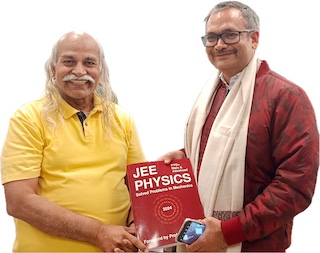Impulse
If a constant force $F$ is applied on an object for time $\Delta t$ then impulse of the force is \begin{align} J=F\Delta t. \end{align} The unit of impulse is kg m/s. Its dimensions are MLT-1. The impulse and the linear momentum have the same dimensions. The impulse of force is equal to the change in linear momentum of the object. This concepts is used to solve some of the collision problems.
The impulse of a time varying force $F(t)$ is given by \begin{align} J=\int_{t_1}^{t_2}F\,\mathrm{d}t \end{align} The impulse is area under $F\text{-}t$ curve.
Problems from IIT JEE
Problem (IIT JEE 2002): Two blocks of masses 10 kg and 4 kg are connected by a spring of negligible mass and placed on a frictionless horizontal surface. An impulse gives a velocity of 14 m/s to the heavier block in the direction of the lighter block. The velocity of the centre of mass is,
- 30 m/s
- 20 m/s
- 10 m/s
- 5 m/s
Problem (IIT JEE 1994): The magnitude of the force (in newton) acting on a body varies with time $t$ (in microseconds) as shown in the figure. AB, BC and CD are straight line segments. The magnitude of the total impulse of the force on the body from $t={4}\;\mathrm{\mu s} $ to $t={16}\;\mathrm{\mu s} $ is _______ N s.
Solution: The impulse, $I=\int F\mathrm{d}t$, is the area under the $F\text{-}t$ curve from $t={4}\;\mathrm{\mu s}$ to $16\;\mathrm{\mu s}$. This area is given by, \begin{align} I & =(2\times200+\tfrac{1}{2}\times 2\times 600+\tfrac{1}{2}\times 10\times 800){10}^{-6} \\ &=5\times{10}^{-3}\;\mathrm{N\,s}.\nonumber \end{align}
Related
Subscribe to our channel
